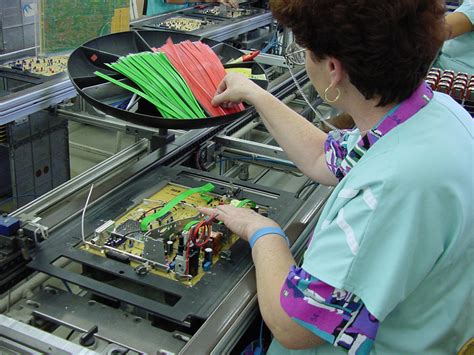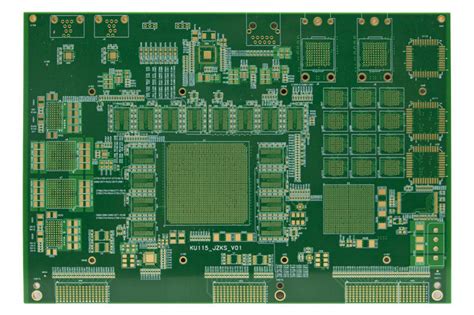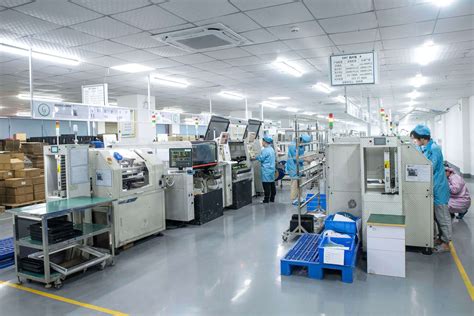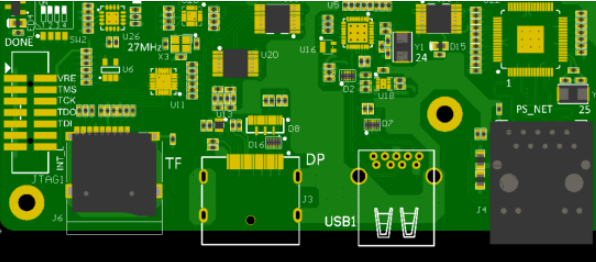Revamping Production: The Future of Contract Electronic Assembly
Key Takeaways
The landscape of contract electronic assembly is undergoing significant transformations, driven by ongoing advancements in innovative technologies. The incorporation of state-of-the-art methods, especially in pcb assembly and pcba, plays a crucial role in redefining production processes. Businesses that strategically implement these technologies not only enhance their operational efficiencies but also ensure cost-effectiveness across their manufacturing lines. For instance, automation in electronic assembly helps streamline production cycles, leading to shorter lead times and improved output quality. Furthermore, embracing eco-friendly practices is becoming essential as companies strive for sustainable growth. As the industry evolves, organizations are also focusing on best practices that address both productivity and environmental responsibilities. Understanding these key elements will be vital for stakeholders aiming to thrive in the competitive contract electronic assembly market while preparing for the future trends that lie ahead.
Introduction to Contract Electronic Assembly
In the rapidly evolving world of manufacturing, contract electronic assembly has emerged as a vital component in ensuring efficiency and cost-effectiveness. This sector primarily focuses on pcb assembly and the associated processes that play a crucial role in producing a wide range of electronic devices. As companies increasingly rely on third-party pcba services, understanding the ins and outs of this service has become essential for both manufacturers and consumers alike.
The landscape of contract electronic assembly is shaped by innovative technologies that leverage automation, robotics, and intelligent software solutions. These advancements not only streamline workflows but also enhance precision in assembling intricate PCBs. Furthermore, as sustainability takes center stage across industries, the focus on eco-friendly practices within contract electronic assembly is gaining momentum. This includes adopting green materials, minimizing waste, and improving energy efficiency throughout production lines.
With the pressures of globalization and competitive markets, businesses are compelled to adopt best practices that elevate production efficiency while simultaneously reducing costs in their pcb assembly processes. This evolution reflects a broader trend towards not just meeting consumer demands but also preparing for future challenges in the landscape of electronic manufacturing. The importance of understanding this dynamic environment cannot be overstated as we look toward the future of contract electronic assembly—a future defined by continuous innovation and adaptation.
Emerging Technologies Transforming the Industry
In the realm of contract electronic assembly, emerging technologies are reshaping the landscape, showcasing innovative solutions that enhance manufacturing capabilities. The integration of automation has significantly improved pcb assembly processes, allowing for precision and speed that were previously unattainable. By leveraging advanced robotics and AI-driven software, manufacturers can optimize their workflows, reducing the risk of errors associated with manual labor. Additionally, new materials and technologies are being developed to facilitate more efficient pcba processes. For instance, the use of flexible circuitry enables more complex designs while minimizing size constraints. Furthermore, the advent of IoT implementations in manufacturing settings allows for real-time monitoring and predictive maintenance, which not only enhances efficiency but also reduces downtime significantly. As these technologies evolve, they promise to drive sustainable growth in contract electronic assembly by fostering a more efficient production environment that focuses on quality and environmental responsibility. The horizon looks bright as these transformative technologies pave the way for a more agile and responsive manufacturing sector.
Best Practices for Enhancing Production Efficiency
In the competitive realm of contract electronic assembly, implementing best practices is essential for maximizing production efficiency. One of the foremost strategies is the adoption of just-in-time (JIT) inventory management, which minimizes waste and ensures that components, including pcb assembly parts, arrive exactly when needed for production. This not only reduces inventory costs but also streamlines workflow, allowing for a smoother transition throughout the manufacturing process.
Additionally, enhancing communication between design and production teams can significantly impact efficiency. Utilizing digital tools that facilitate real-time updates and adjustments can lead to quicker responses to design changes or unexpected challenges. This is particularly important in pcba (printed circuit board assembly), where precise alignment with design specifications is critical.
To further bolster efficiency, regular training and skill development for technicians are invaluable. By investing in ongoing education regarding new tools and techniques—particularly those related to automation—companies can keep their workforce adept at handling complex tasks efficiently.
“Implementing continuous improvement methodologies, such as Lean and Six Sigma, not only cuts down on waste but also fosters a culture of innovation.”
| Strategy | Benefits |
|---|---|
| Just-in-Time Inventory | Reduces costs and increases efficiency |
| Enhanced Communication | Faster response to changes |
| Training & Skill Development | Keeps workforce adaptable |
In conclusion, integrating these best practices can lead to substantial gains in production efficiency within the contract electronic assembly sector. As manufacturers continue to evolve alongside technological advancements, a focus on these elements will be pivotal in maintaining competitiveness while achieving sustainable growth.
Cost Reduction Strategies in Electronic Assembly
In the rapidly evolving domain of contract electronic assembly, companies are increasingly focusing on effective cost reduction strategies to maintain competitiveness and profitability. One of the primary methods employed is optimizing PCB assembly processes. Streamlining production workflows through advanced technologies can significantly minimize waste and enhance efficiency. Techniques such as Lean Manufacturing and Six Sigma are being integrated, allowing firms to identify bottlenecks and implement corrective measures swiftly.
Additionally, the adoption of automation in PCBA—from pick-and-place machines to automated optical inspection systems—has led to substantial labor savings and decreased error rates. This not only cuts costs but also improves the overall quality of assemblies produced. Collaborative relationships with suppliers can further enhance cost-efficiency by negotiating better rates for materials and components while ensuring consistent quality.
Lastly, embracing sustainable materials in the production process contributes to long-term savings. Utilizing eco-friendly components not only reduces waste management costs but also aligns with growing consumer preferences for sustainable practices. By leveraging these innovative strategies, companies can navigate challenges within the contracting landscape while positioning themselves for sustainable success in the future.
Sustainable Growth: Eco-friendly Practices in Manufacturing
The shift towards sustainable growth in manufacturing, particularly in the realm of contract electronic assembly, is becoming increasingly important as industries strive to minimize their environmental impact. Embracing eco-friendly practices not only aligns with regulatory standards but also appeals to a growing consumer base that prioritizes sustainability. One significant development is the incorporation of green materials in pcb assembly processes, which helps reduce waste and promote recycling. Additionally, optimizing the pcba workflows enhances energy efficiency during production—this is vital as manufacturers seek to lower their carbon footprint. The implementation of advanced technologies such as automation can facilitate better resource management and reduce excess material usage during assembly. Embracing these practices not only improves a company’s brand image but can also lead to cost savings in the long run. Thus, focusing on sustainable practices is key for manufacturers looking to thrive in an increasingly competitive and environmentally conscious market.
The Impact of Automation on Production Processes
The integration of automation in contract electronic assembly is revolutionizing the way manufacturers approach production. By leveraging advanced machinery and software solutions, companies can significantly enhance their pcb assembly processes, resulting in improved accuracy and efficiency. Automated systems are capable of undertaking repetitive tasks that once relied heavily on human labor, thereby minimizing the risk of errors and increasing throughput. Furthermore, pcba technologies are becoming more sophisticated, enabling real-time monitoring and adjustments that ensure quality standards are consistently met. As these automated systems evolve, they allow for a more flexible production environment where rapid changes to designs or batch sizes can be accommodated seamlessly. This adaptability not only supports cost reduction strategies but also plays a vital role in driving sustainable growth through optimized resource management. As the industry continues to embrace these innovative practices, the future of contract electronic assembly looks set to be defined by an even greater reliance on automation, promising further advancements in efficiency and product quality.
Future Trends and Predictions for Contract Electronic Assembly
As industries evolve, contract electronic assembly (CEA) is poised for significant transformation driven by technological advancements and market demands. The future of pcb assembly will likely see an increased adoption of automation and robotics, enhancing precision and productivity. These advancements aim not only to streamline processes but also to address challenges associated with labor shortages. Furthermore, the integration of pcba (printed circuit board assembly) technologies into smart manufacturing frameworks will enable real-time data monitoring and analytics, paving the way for more agile production lines.
Additionally, the focus on sustainability is transforming the landscape of contract electronic assembly; manufacturers are increasingly seeking eco-friendly materials and processes, aligning with global environmental standards. Consequently, firms prioritizing sustainable practices will not only improve their brand reputation but also cater to a growing customer base that values sustainability.
Moreover, as consumer demands shift towards personalization, we can anticipate a rise in smaller batch productions which leverage advanced manufacturing techniques such as 3D printing alongside traditional methods. This trend supports greater customization without sacrificing efficiency or incurring excessive costs. In summary, the fusion of innovation, sustainability, and customization positions contract electronic assembly as a pivotal player in shaping the future of manufacturing.
Case Studies: Success Stories in the Evolving Landscape
In recent years, several companies in the contract electronic assembly sector have achieved remarkable success through the adoption of advanced methodologies and technologies. For instance, a prominent PCB assembly firm integrated automation into its production line, significantly improving efficiency and reducing turnaround times. By employing pcba (Printed Circuit Board Assembly) capabilities alongside real-time data analytics, the company streamlined its processes and minimized errors, leading to a 30% reduction in production costs. Another success story comes from a startup that focused on eco-friendly practices, utilizing sustainable materials for their pcb assembly operations. This not only appealed to a growing market of environmentally conscious consumers but also resulted in long-term cost savings through waste reduction. These case studies illuminate how innovation, when aligned with strategic best practices, can pave the way for sustainable growth in the contract electronic assembly industry, setting benchmarks for others to follow.
Conclusion
The landscape of contract electronic assembly is undergoing significant transformations, driven by emerging technologies and best practices aimed at enhancing production efficiency. One of the prominent aspects contributing to this evolution is the integration of automated systems, which streamline processes and improve accuracy in pcb assembly. As companies embrace innovation, they are increasingly leveraging advanced software solutions for pcba that allow for real-time monitoring and data analytics, which in turn leads to informed decision-making and optimized operations. This shift not only aids in cost reduction but also supports sustainable growth by minimizing waste and enhancing resource management. As the industry continues to evolve, it will be essential for stakeholders to adapt to these changes by investing in cutting-edge technologies and fostering a culture of continuous improvement. The future promises to bring a myriad of advancements that will redefine what is possible in contract electronic assembly, paving the way for a more efficient, cost-effective, and environmentally conscious manufacturing environment.
FAQs
What is contract electronic assembly?
Contract electronic assembly refers to the outsourcing of the manufacturing of electronic components and systems to specialized third-party companies. These partners typically handle processes such as PCB assembly and provide expertise in PCBA production.
What are the main benefits of using contract electronic assembly services?
Utilizing contract assembly services can lead to reduced operational costs, improved production efficiency, and access to advanced technologies. Companies benefit from the expertise of contractors who specialize in various aspects of manufacturing, including quality control and supply chain management.
How does automation influence contract electronic assembly?
Automation significantly enhances production processes by increasing speed, accuracy, and consistency. Automated systems can streamline workflows in PCB assembly, reducing human error and allowing for higher throughput.
What trends are shaping the future of this industry?
Key trends include the rise of smart manufacturing, increased use of automation and robotics, adoption of sustainable practices, and advancements in flexible manufacturing technologies. These trends are driving innovation while ensuring that companies stay competitive.
How can companies ensure sustainability in their electronic assembly practices?
Companies can adopt eco-friendly materials, implement recycling programs for excess materials, and invest in energy-efficient machinery. By prioritizing sustainable growth, businesses can reduce their environmental impact while enhancing their reputation.
For more information on pcb assembly, please click here: Contract PCB Assembly Services







